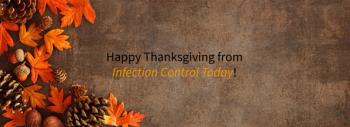
Study Shows Reducing In-Hospital Patient Transports and Urinary Catheter Use Decreases HAIs
Patients treated in hospital intensive care units (ICUs) for severe neurological events such as stroke and aneurysm rupture, who require ventilator support, are at high risk of pulmonary and urinary infections that can lead to more serious complications and death. A study by researchers at Overlook Medical Center recently published in Neurocritical Care shows that changing standard practices to reduce the number of times patients are transported for brain scans and the use of urinary catheters substantially decreases ventilator-associated events (VAEs) and catheter-associated urinary tract infections (CAUTIs). This appears to be the first time that the frequency of patient transports has been shown to be a risk factor for hospital-acquired infections (HAIs).
The study first retrospectively reviewed the incidence of HAIs among adult patients on ventilators in a neuro ICU over a two-year period to identify factors contributing to respiratory and urinary infections. Based on those findings, interventions were implemented and their impact was prospectively assessed with results showing a 53 percent reduction in HAIs over 18 months.
Interventions implemented included:
- Introducing a mobile CT scanner in the neuro ICU to reduce transports for frequent brain imaging
- Daily re-evaluation of the continued need for a urinary catheter, reducing use whenever possible
- Re-training ICU staff on insertion and maintenance techniques and introducing a new Foley kit that simplified and standardized the sterile insertion process
“Through a rigorous analysis we were able to pinpoint causes and take actions that together, had a very significant impact on preventing ventilator and urinary catheter-related infections,” said John J. Halperin, MD, lead study investigator and chair, department of neurosciences at Overlook Medical Center. “Better training and limiting the use of catheters was important in this effort. But the real surprise was that transporting patients for brain imagining was a major source of the problem and by introducing a mobile CT scanner we could substantially reduce infections.”
The study was conducted at Overlook Medical Center’s Comprehensive Stroke Center and included all adult patients in the neuro ICU who required intubation and ventilator support during their stay. The researchers reviewed retrospective respiratory and UTI data of patients admitted to the neuro ICU between January 1, 2011 and May 31, 2014 using nosocomial infection markers (NIMs). Beginning in January 2013, CAUTIs, VAEs and possible ventilator-associated pneumonias (PVAPS) were tracked prospectively using strict National Health Safety Network definitions. Additionally, the researchers tested the relationship between urinary and respiratory HAIs and frequency of transport since transfer to a stretcher and transport to Radiology for brain imaging provided opportunities for unintentional manipulation of the endotracheal tube and urinary catheter.
An extensive review of current ventilator and catheter practices was conducted and the retraining of all ICU staff, the introduction of new Foley kits, and changes in procedures to reduce the use of catheters were fully implemented by August 2014. A mobile CT scanner was introduced in January 2015, and since February 2015 has been routinely used for more than half of all neuro ICU head scans.
A multidisciplinary approach to care of neurocritically ill patients resulted in a significant decrease in the prevalence of HAIs primarily driven by a reduction in catheter use and transport of patients for brain imaging.
- VAEs decreased by 48 percent
- Catheter use decreased by 46 percent and the incidence of CAUTIs in this patient population went from 2-3 per month to zero over a six-month period
- Overall complication rate decreased by 55 percent
- ICU length of stay was lowered by 1.5 days
- Risk-adjusted mortality dropped 11 percent
- Total HAIs decreased by 53 percent over 18 months
Source: Atlantic Health System
Newsletter
Stay prepared and protected with Infection Control Today's newsletter, delivering essential updates, best practices, and expert insights for infection preventionists.





